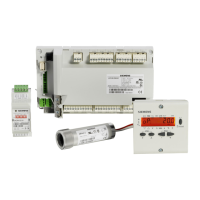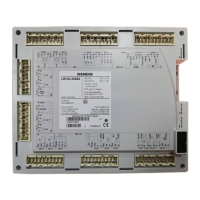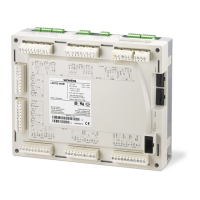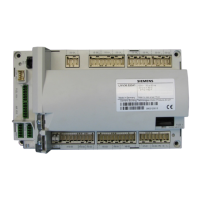LMV Series Technical Instructions
Document No. LV3-1000
SCC Inc. Page 27 Section 5
Additional Tips for Burners with VSD Speed Shift
• The VSD speed shift occurs rather slowly. The rate at which the shift occurs is 1% VSD shift every 2
seconds until the targeted shift is reached. If the VSD speed shift is used as part of an O
2
trim
system, this must be taken into account.
• As an alternative to activating the analog input test, a PLC or other device can be set up to read back
the amount of VSD trim via LMV3 Modbus register 148, thereby creating closed loop feedback on
the VSD speed shift system. If the PLC or other device detects a problem with what is being fed back
over this register, the PLC or other device can take corrective action (adjust signal, shut down, or
lockout the burner, etc.)
• If the PLC or other device that is sending the 4-20mA VSD speed shift command to the LMV3 has a PI
(Proportional + Integral) loop linking the speed shift command to a measured value and a set point,
PI “windup” is a concern. If the PLC or other device is up against one of the LMV3 trim limits
unknowingly, PI windup is almost a certainty. To address this issue, additional Modbus registers
have been added so that the PLC or other device can read back the trim limits programmed into the
LMV3. These registers are: 144 – Lower trim limit Fuel 0, 145 – Upper trim limit Fuel 0, 146 – Lower
trim limit Fuel 1, 147 – Upper trim limit Fuel 1
• The ignition speed shift is typically used to make the fuel-to-air ratio more fuel rich at light off and
during the transition from light off (P0) to low fire (P1). Running the burner richer typically helps
burner stability, especially when the burner head and / or combustion chamber is cold.

